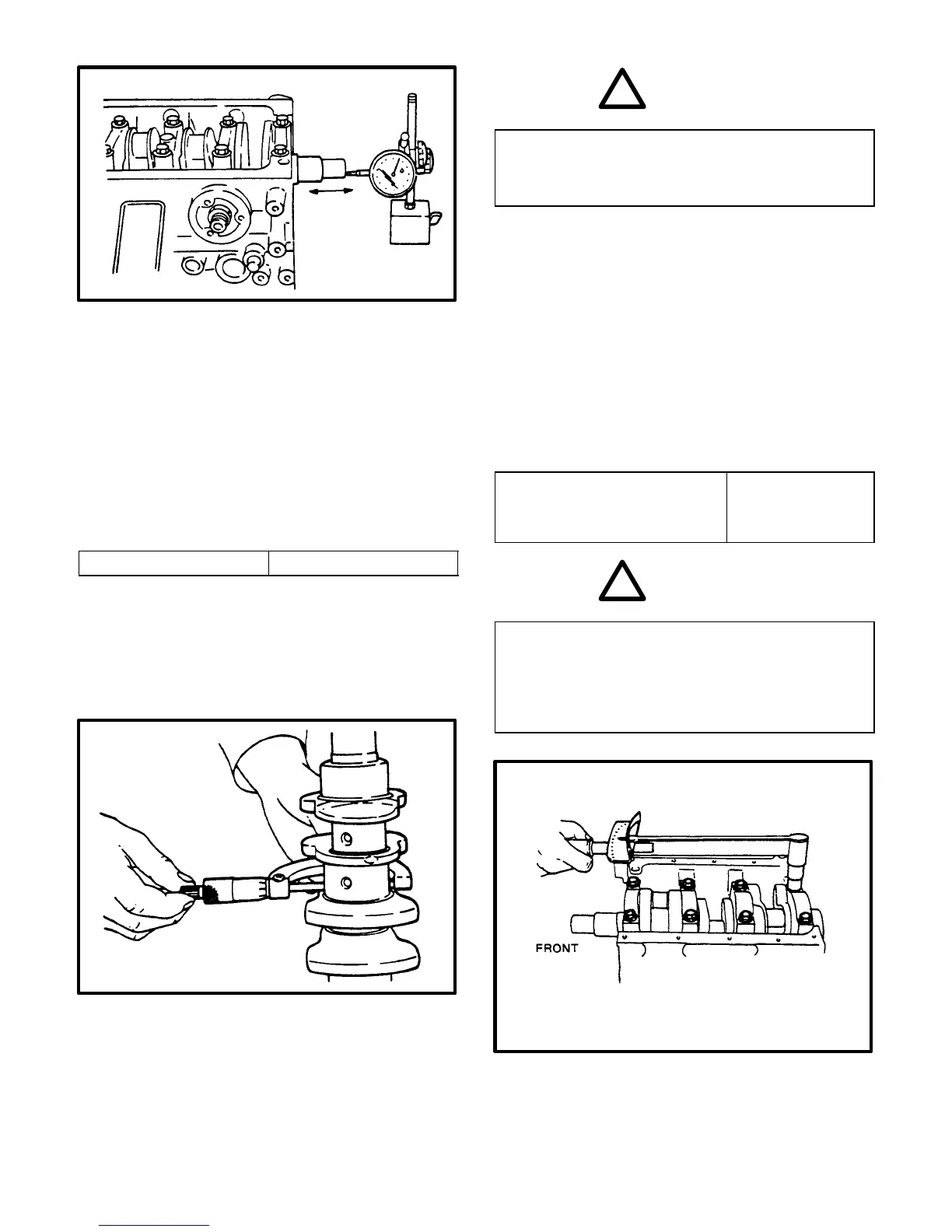74
Out of round and taper (uneven wear):
An unevenly worn crankshaft journal or crankpin
shows up as difference in diameter at a cross
section or along its length (or both). This differ-
ence, if any, is to be determined from micrometer
readings taken as shown in figure below.
If any of the journals or crankpins is badly dam-
aged or if the amount of uneven wear in the
sense explained above exceeds the limit, repair
(by re–grinding) or replace the crankshaft.
Limit or uneven wear 0.01 mm (0.0004 in.)
NOTE:
Where journal or crankpin re–grinding is necessary,
finish the diameter to the size necessary for the
undersize bearing.
Crankshaft Journal Bearings
Inspect the bearings for signs of fusion, pitting,
burn or flaking and observe the contact pattern.
Defective bearings must be replaced.
CAUTION
!
As in the case of connecting rod bearings, the
journal bearings are not meant to be repaired by
scraping or sanding with sandpaper or by any
other machining.
Journal to bearing clearance:
Check this clearance by using gaging plastic
(Plastigage). The following method is based on
the use of gaging plastic:
1) Cut the gaging plastic stock to the required
length (equal to the width of the bearing), and
place it axially on the journal, avoiding the oil
hole.
2) Mount the crankshaft in usual manner, tight-
ening the bearing caps to the specified torque
value. (It is assumed that a gaging plastic piece
is pinched at each journal.) Do not rotate the
crankshaft when gaging plastic is in,
Tightening torque for cap
bolts
55–60 N–m
5.5–6.0 kg–m
40.0–43.0 lb–ft
CAUTION
!
Each of the four bearing caps has an arrow
marked on it. Be sure to position each cap with
its arrow pointing to front end and to match it
(by the cylinder number) to its journal. Remem-
ber, the three cylinders are numbered, 1, 2, and
3, as counted from the front of engine.
3) Remove the caps. By referring to the envelope scale,
measure the width of the widest part of the piece, and
determine whether the radial clearance checked (obtain
from the gaging plastic piece) is within the limit.
